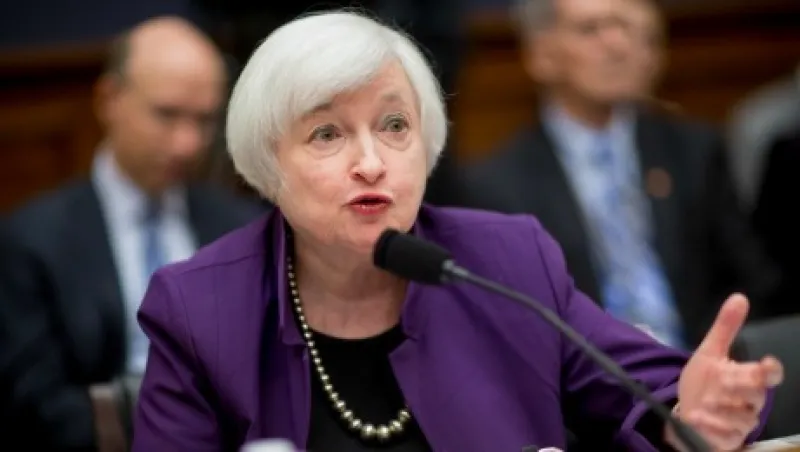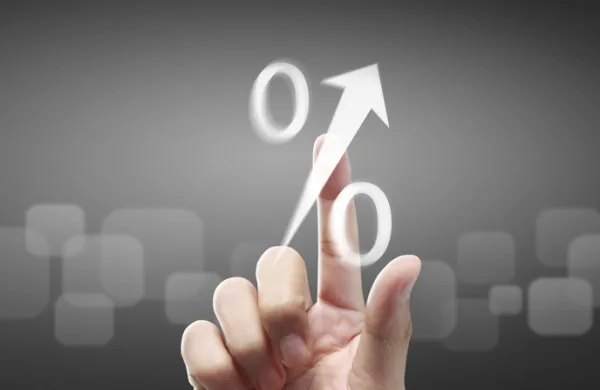More than at any time in the past few years, dissension has broken out among Federal Reserve policymakers. Given the current stage of the economic cycle, the discord is not surprising.
The disagreement is unlikely to affect the Fed’s monetary policy, as chair Janet Yellen enjoys enough support from Federal Open Market Committee members — particularly from the inner core of the Board of Governors — to have her way, analysts say. And the chair seems eager to get off the zero bound, judging by her congressional testimony on Wednesday. A December rate hike is a “live possibility,” she told the House Committee on Financial Services, if economic data remain strong. Stocks and bonds fell in reaction as the market priced in a better-than-even chance of a December hike, while the dollar rose.
“It does feel like disagreement is more intense now than it typically is, and for good reason,” says David Stockton, an ex–Fed economist who is now a senior fellow at the Peterson Institute for International Economics in Washington. “It’s difficult to determine when to pursue the first tightening. How much confidence can you have that inflation will return to target?”
The Fed’s federal funds rate target has stood at a record low of zero to 0.25 percent since December 2008. The Fed announced an inflation target of 2 percent in 2012. But its favored inflation gauge, the personal consumption expenditures index, has stayed below that level for most of the time since then; it climbed just 0.2 percent in the 12 months through September.
The discord runs in several directions. On the hawkish side, Richmond Fed president Jeffrey Lacker has dissented at the past two FOMC meetings, arguing that the central bank should have raised rates in September and October. In January, Lacker loses his voting status on the FOMC, but James Bullard, president of the St. Louis Fed, Esther George, president of the Kansas City Fed, and Loretta Mester, president of the Cleveland Fed, rotate in. All three are mild hawks, and they could dissent if the Fed continues to refrain from increasing rates.
On the dovish side, board members Lael Brainard and Daniel Tarullo said last month that inflation wasn’t yet strong enough to justify rate hikes, seeming to contradicting Yellen’s September statement that a majority on the FOMC expected to begin raising rates this year. Yet Brainard appeared to modify her stance in an appearance at a conference at the European Central Bank in Frankfurt on Wednesday, calling the domestic outlook for the U.S. economy “encouraging” but voicing concerns about the negative impact of the dollar’s strength.
Earlier, a split opened in August between Fed vice chair Stanley Fischer and FOMC vice chair William Dudley, president of the New York Fed. First, Dudley said that volatility in financial markets and trouble in the global economy made “the decision to begin the normalization process at the September [FOMC] meeting seem less compelling to me than it did several weeks ago.” Later the same week, however, Fischer said there was “good reason to believe that inflation will move higher as the forces holding down inflation dissipate further.”
Of all the disagreements, the one between Fischer and Dudley is potentially the most damaging. According to former Fed officials, it is the troika of those two and Yellen that really establishes Fed policy. “It was truly remarkable that the two vice chairs disagreed in public just a couple of weeks before an FOMC meeting,” says Andrew Levin, a former Fed economist who now is a professor at Dartmouth College in Hanover, New Hampshire. “As chair Yellen noted at her press conference, this was an unfortunate state of affairs.”
It doesn’t appear that Fischer and Dudley are too far apart, though. “They aren’t exactly on the same page, but they are close enough that they can be lumped [with Yellen] into a move to raise rates in December, unless the economic data between now and then prove to be weak,” says Stephen Oliner, a former Fed economist who is now a resident scholar at the American Enterprise Institute in Washington.
Indeed, Dudley suggested as much on Wednesday, saying he agreed with Yellen that a rate hike is possible in December but adding, “Let’s see what the data shows.” In a speech of his own, Fischer didn’t comment directly on the timing of rate hikes but said inflation was “not that far” from the Fed’s 2 percent target.
As for the extreme hawks and doves, their views won’t affect policy much, the ex–Fed officials agree. “The hawks don’t have a lot of influence, especially the most hawkish,” Oliner says. “Lacker is a serial dissenter; so was [former Philadelphia Fed president] Charles Plosser. George is in the same camp. They’re loud, but in terms of moving a Fed policy, they’re a big fat zero.” Other than the New York Fed president, regional Fed chiefs rarely have great influence.
Oliner says it’s unlikely in any case that Brainard and Tarullo would dissent from a decision to boost rates in December. “There are a wide range of views at the FOMC that get smooshed into the statement,” he says. Board members, unlike regional Fed presidents, can’t easily dissent. “They’re essentially Yellen’s employees,” Oliner says. “They may get bones thrown to them in the statement, but they would express their dissent in the meeting,” rather than through their votes.
Most of the analysts believe the Fed will likely lift rates in December if payroll reports remain strong and inflation shows any sign of climbing. Still, “the disagreements within are genuine and analytical,” Stockton says. “It has been unusual for board members to speak so forcefully, but it indicates they want their case to be heard.”
Get more on macro .







